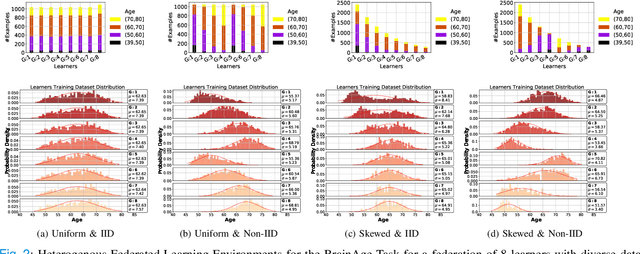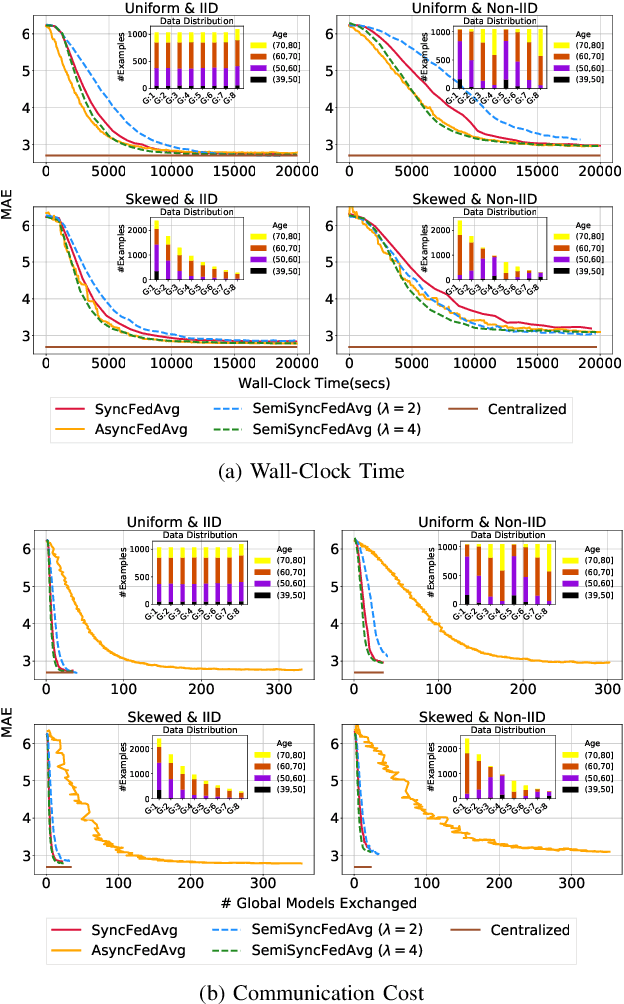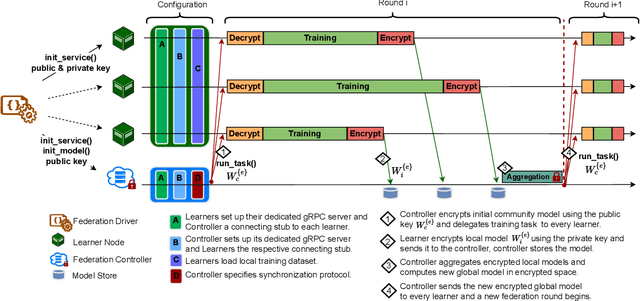Armaghan Asghar
MetisFL: An Embarrassingly Parallelized Controller for Scalable & Efficient Federated Learning Workflows
Nov 13, 2023Abstract:A Federated Learning (FL) system typically consists of two core processing entities: the federation controller and the learners. The controller is responsible for managing the execution of FL workflows across learners and the learners for training and evaluating federated models over their private datasets. While executing an FL workflow, the FL system has no control over the computational resources or data of the participating learners. Still, it is responsible for other operations, such as model aggregation, task dispatching, and scheduling. These computationally heavy operations generally need to be handled by the federation controller. Even though many FL systems have been recently proposed to facilitate the development of FL workflows, most of these systems overlook the scalability of the controller. To meet this need, we designed and developed a novel FL system called MetisFL, where the federation controller is the first-class citizen. MetisFL re-engineers all the operations conducted by the federation controller to accelerate the training of large-scale FL workflows. By quantitatively comparing MetisFL against other state-of-the-art FL systems, we empirically demonstrate that MetisFL leads to a 10-fold wall-clock time execution boost across a wide range of challenging FL workflows with increasing model sizes and federation sites.
Secure Federated Learning for Neuroimaging
May 11, 2022



Abstract:The amount of biomedical data continues to grow rapidly. However, the ability to collect data from multiple sites for joint analysis remains challenging due to security, privacy, and regulatory concerns. We present a Secure Federated Learning architecture, MetisFL, which enables distributed training of neural networks over multiple data sources without sharing data. Each site trains the neural network over its private data for some time, then shares the neural network parameters (i.e., weights, gradients) with a Federation Controller, which in turn aggregates the local models, sends the resulting community model back to each site, and the process repeats. Our architecture provides strong security and privacy. First, sample data never leaves a site. Second, neural parameters are encrypted before transmission and the community model is computed under fully-homomorphic encryption. Finally, we use information-theoretic methods to limit information leakage from the neural model to prevent a curious site from performing membership attacks. We demonstrate this architecture in neuroimaging. Specifically, we investigate training neural models to classify Alzheimer's disease, and estimate Brain Age, from magnetic resonance imaging datasets distributed across multiple sites, including heterogeneous environments where sites have different amounts of data, statistical distributions, and computational capabilities.
 Add to Chrome
Add to Chrome Add to Firefox
Add to Firefox Add to Edge
Add to Edge